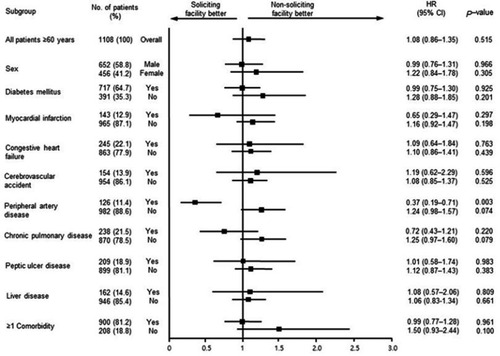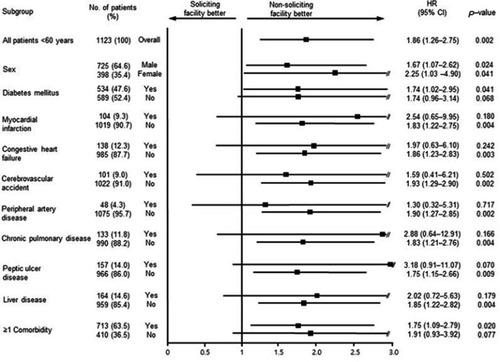Abstract
Background
There is concern that overcompetition and illegal activities such as patient solicitation by some dialysis units may threaten patients’ health in Korea. Therefore, we investigated the effect of nephrologists’ patient-soliciting activity on hemodialysis practices and patients’ survival using the Korean Health Insurance Review and Assessment Service database.
Methods
We selected 19 soliciting hemodialysis facilities and matched them with 19 non-soliciting facilities located nearby to eliminate location bias. Soliciting behavior was defined as the reduction of medical fees or providing money to attract dialysis patients.
Results
A total of 2,231 incident dialysis patients were included and followed for a median of 37.2 months. Soliciting facilities had a lower percentage of nephrologists, a higher average daily number of hemodialysis patients per physician, and a higher number of hemodialysis patients per nurse compared with non-soliciting facilities. Survival analysis showed that the crude mortality was significantly higher in patients treated in soliciting facilities than in those treated in non-soliciting facilities, even after adjustment for the effects of many other independently predictive covariates.
Conclusions
This study demonstrated that in Korea, the overall mortality rate in incident dialysis patients was higher in those attending soliciting facilities than in those attending non-soliciting facilities.
Keywords:
Acknowledgments
This work was supported by a grant from the Korean Medical Devices Industry Association (KMDIA).
Disclosure
The authors declare that they have no competing interests in this work.


